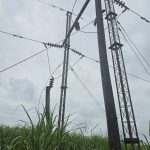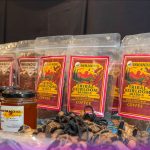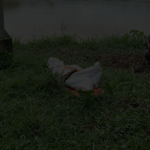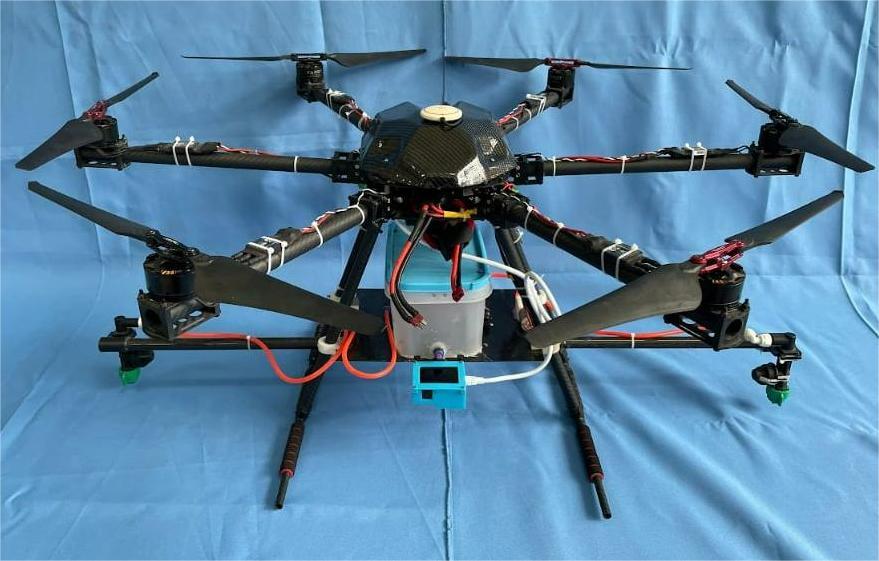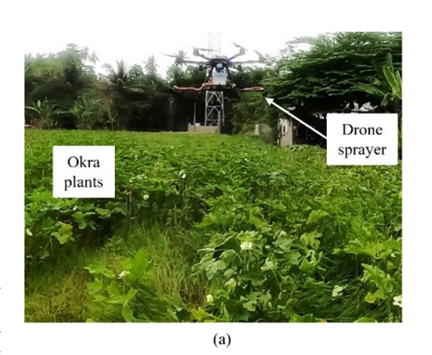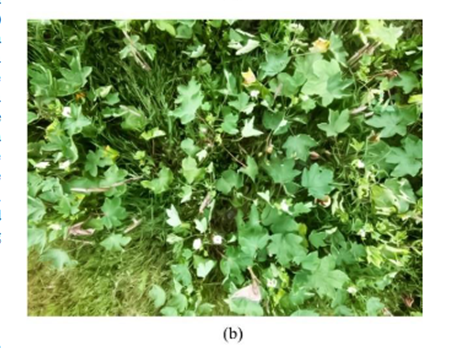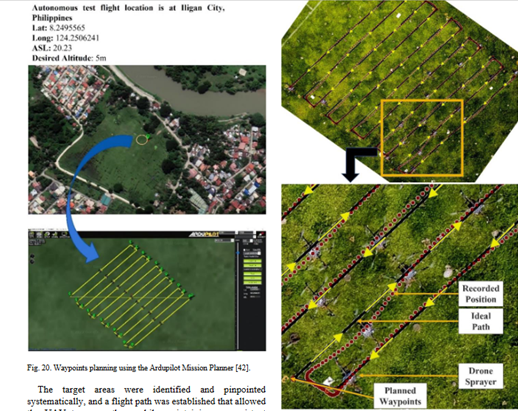By Albert Jed Doble and Genierose Eco, contributors
MALAYBALAY CITY (20 January 2025/ Bukidnon News)— An electronics engineer from Bukidnon State University developed a drone sprayer designed to help farmers cut cost on agrochemicals.
Dr. Manuel Chad G. Agurob, head of the Electronics Department of the College of Technologies, said the fully developed version of the project is self-driving, vision-based, and can control the amount of chemicals sprayed on crops.
The ‘Autonomous Vision-based Unmanned Aerial Spray System with Variable Flow for Agricultural Application’, he said, aims to help address poor planting management, making it possible for farming to be less costly.
The smart drone has a built-in RGB camera and computer to analyze the color and health of crops and adjust the amount of liquid sprayed by its two independent nozzles, ensuring healthier crops get less and weaker ones get more.
Dr. Agurob said the aerial spray system is still on a laboratory scale: “There is a need for more resources and collaboration with experts from the agriculture field to fully implement this in real-world scenarios…”
Family’s farming background
The project is borne out of his doctorate research at the Department of Mechanical Engineering and Technology of Mindanao State University-Iligan Institute of Technology (MSU-IIT). The Department of Science and Technology through its Engineering Research and Development for Technology unit (DOST-ERDT) supported it.
Dr. Agurob said his family’s farming background and the extensive efforts they do to keep crops healthy were what inspired him. They could not keep the cost low because they have no mechanism to effectively assess crop health and proper application of pesticides and fertilizers.
“I [wanted] to see if there is a scientific method to save on pesticides, increase the yield, and lower fertilizer consumption,” he said. With the gap in the cost of fertilizers, especially with sweet corn and other crops, his family used manual spray in their farm in Brgy. Kulasihan, Lantapan.
Drone sprayer: 3 kg liquid, 300 ml per minute
The drone is powered by six propellers and has a tank that can hold up to 3 kilograms of liquid, which can be sprayed at a maximum rate of 300 milliliters per minute. It also uses advanced technology to stay on path, with only a small margin of error. A special sensor helps the drone maintain the right height above the ground to ensure even spraying.
The results of the study showed that the drone system worked well in controlling the spray flow and targeting areas. This means farmers can save on agrochemical costs and reduce waste while improving their harvest.
Dr. Agurob noted that they could still test different spray nozzles and use drones with bigger tanks. ”By fine-tuning the technology, we can ensure even better spray coverage, reduce drift, and make this system even more efficient and sustainable for farmers,” he added.
His research was published in the September 2023 issue of the IAENG International Journal of Computer Science. Dr. Agurob said he planned to implement it in his family farm. Other researchers, he said, could benefit from the study and may cite his work.
“I used my electronics background,” he said. “The drone is a mechanical work, the vision-based strategy could achieve greater efficiency when integrated with AI. I have to refer to many experts to pursue the project.”
Among his research collaborators were Amiel Jhon Bano, Immanuel Paradela, Steve Clar, Earl Ryan Aleluya, and Carl John Salaan.
The writers are 1st year BS Development Communication students of Bukidnon State University. The story is edited from their submission for the Balitang RDE (Research-Development-Extension), a laboratory publication of the DC 102A (Introduction to Media Writing) class in coordination with the university’s Research Development and Extension and Community Services units.
